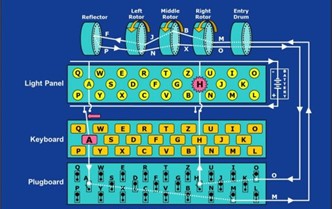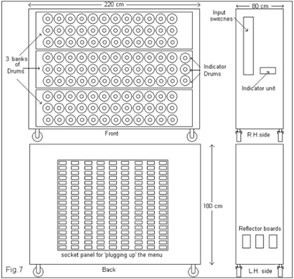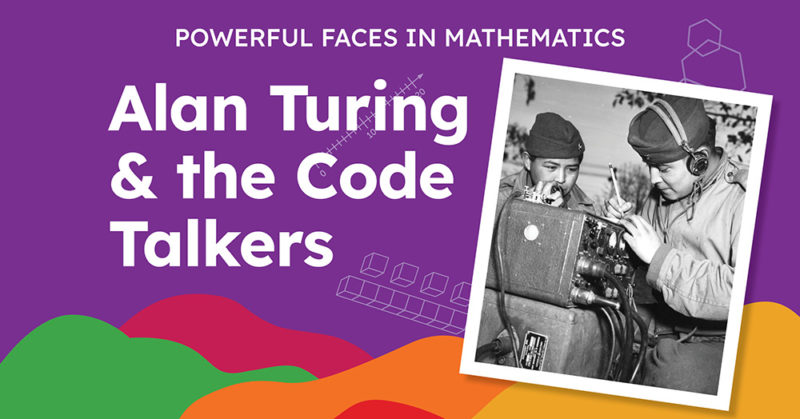Mathematicians
Powerful Faces in Mathematics: Alan Turing & the Code Talkers
Do you have a secret? Or at least some sensitive information you are trying to hide from another party? If you are a parent, I can guarantee you’ve used the spelling trick to convey messages to your partner that you don’t want your children to know; especially if your plans have anything to do with an N-A-P. It’s a common household practice, that is until they start learning to recognize the letters of the alphabet and/or learn to spell. At that point, more elaborate measures must be taken.
The use of codes or cyphers to protect information is practice that goes back hundreds of years. Don’t want someone else to know your private information, encrypt it. The art of cryptology dates back to the beginning of writing. Think about hieroglyphs? These are writings which were understood by the local tribes/families, but those not of the same community would most likely not be able to read the writings.
Once writing and languages became more standard, cyphers took a front seat for means of encryption. The earliest known cypher is the Caesar Cypher, used around 100BC to keep Emperor Julius Caesars correspondences private. This cypher relies on the user to shift the letters in the message an agreed upon number in a certain direction. Caesar’s original messages were shifted 3 letters to the right, as you can see below. For example, the word ORIGO would be coded in a message as ‘RULJR’.

We have come a long way since the Roman Empire existed, and encrypting messages, especially during wartime, have become more elaborate and sophisticated.
One such era of incredible feats of coding and decoding messages was World War II. The German troops relied on the ‘Enigma’ code, which was finally broken by mathematician and celebrated computer science pioneer, Alan Turing.
Born June 23, 1912, Turing exceled at mathematics at the Universities of Cambridge and Princeton. He worked on the Entscheidungsproblem, which proved that there was no universal decision-making method that “computers” could use to solve a problem. At this time, computers referred to mathematicians who worked by hand to ‘compute’ problems; electronic computers would come later to assist with alleviating the Entscheidungsproblem conundrum. In response, Turing create The Turing Machine, which could use algorithms and clues, such as symbols, within a mathematical equation to make computations. This machine put Turing on the map, and it was only 2 years later he was recruited by the British Government to work at Bletchley Park deciphering the Enigma Code being used by the German forces during WWII.
The Enigma Machine was a complex mechanism that would change an imputed letter up to seven times through a series of rotors and plug boards, before outputting a different letter. Turing and his team built their own machines (known as the Bombes) to essentially work the code backwards in hopes of breaking it. And break it, they did. In fact, Turing is personally responsible for breaking the codes of the German U-Boats, about which Prime Minister Churchill said at the time, “The only thing that ever really frightened me during the war was the U-boat peril.”
The British Bombes were electro-mechanical machines which worked by using a hypothesis for a word or phrase the engineers thought may be in the message, and working backward to see if their educated guess was right. Once a hypothesis was entered into the machine, the rotors would throw out all connections which would not work to make that word or phrase, but would stop when a possible connection was found. So, through engineering and mathematics, the researchers at Bletchley Park, led in part by Alan Turing, were able to decode German transmissions. By the end of the war, over 200 Bombes were constructed, and some 4000 messages were able to be broken daily. It is of no wonder that at the war’s end, Alan Turing was made Officer of the Most Excellent Order of the British Empire (OBE).
The Enigma Machine path of input/output

Turing’s ‘Victory’ Bombe Machine

While the British were busy decoding messages from the U-Boats, other Allied Forces were working on a code of their own with the assistance of Native Americans. Just as the Axis’ tried (and failed) to encrypt their messages, the Allies too needed a way to communicate that could not be deciphered by the enemy. The US Military stepped in with an answer to use its American Indian languages. At this time, many Native American languages were only taught and passed down orally, meaning there wasn’t a written language, which in turn meant that it could not be learned outside their community.
US Military branches recruited Native speakers to join their Army, Navy, and Marine branches. The code consisted of 26 Native terms which would stand for the individual letters of the English alphabet. There were also over 400 agreed upon words that would directly replace terms common to wartime communications. For example, the Navajo Code Talkers substituted their word ‘besh-lo’, which translates to “iron fish”, in place of the English word ‘submarine’. These substitutions made it possible to relay messages quickly and effectively. So effectively, in fact, that the use of the Navajo Code Talkers in France, and the Comanche Code Talkers of Japan were directly responsible for the Allied successes on the Beaches of Normandy and Iwo Jima as the Code Talkers code was never decrypted. The Medal of Honor was awarded the Code Talkers of WWII in 2001. During the ceremony, President George W. Bush said about those Native American heroes, “In war, using their native language, they relayed secret messages that turned the course of battle”.

Above is just a taste of what code-breakers and cryptologists can do. What other forms of code have you encountered? When else would encrypting messages be meaningful? Have you ever tried to decrypt a message? I urge you to discover for yourself, the world of cyphers is fascinating.
Resources:
- https://ghostvolt.com/articles/cryptography_20th_centuary.html
- https://www.britannica.com/biography/Alan-Turing
- https://youtu.be/ybkkiGtJmkM
- https://www.azcentral.com/story/news/local/arizona/2018/07/11/navajo-code-talker-facts-unbreakable-code/460262002/
- http://rutherfordjournal.org/article030108.html



